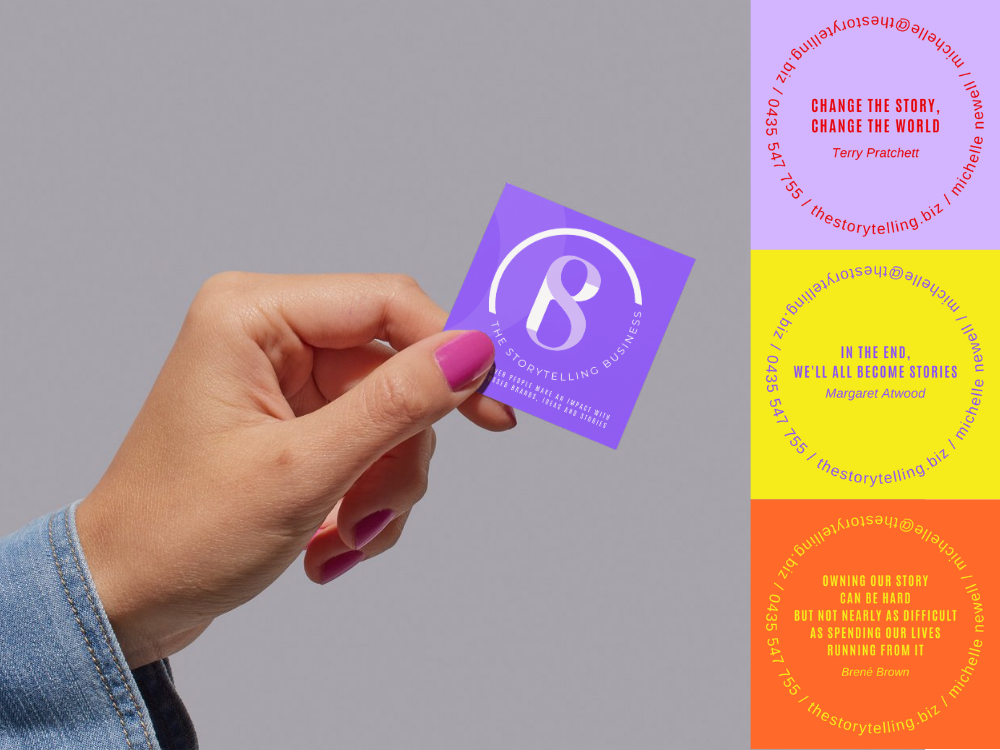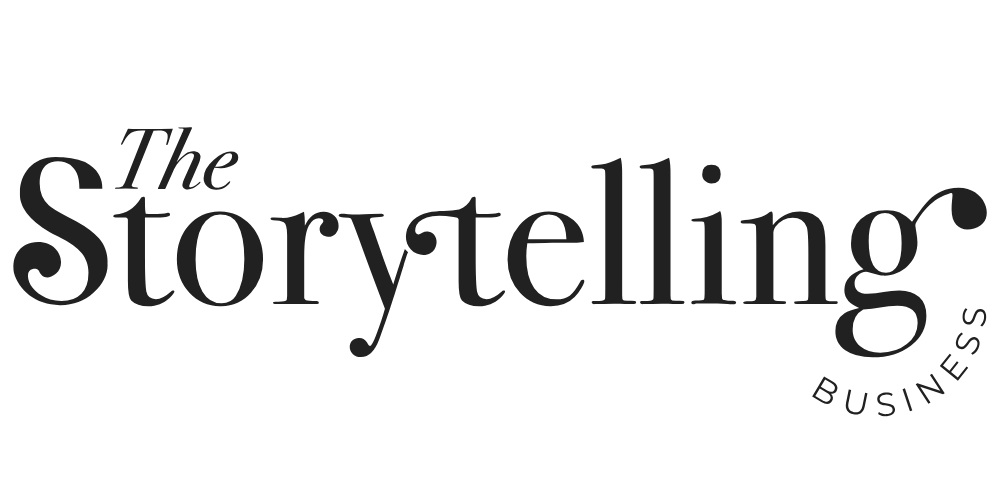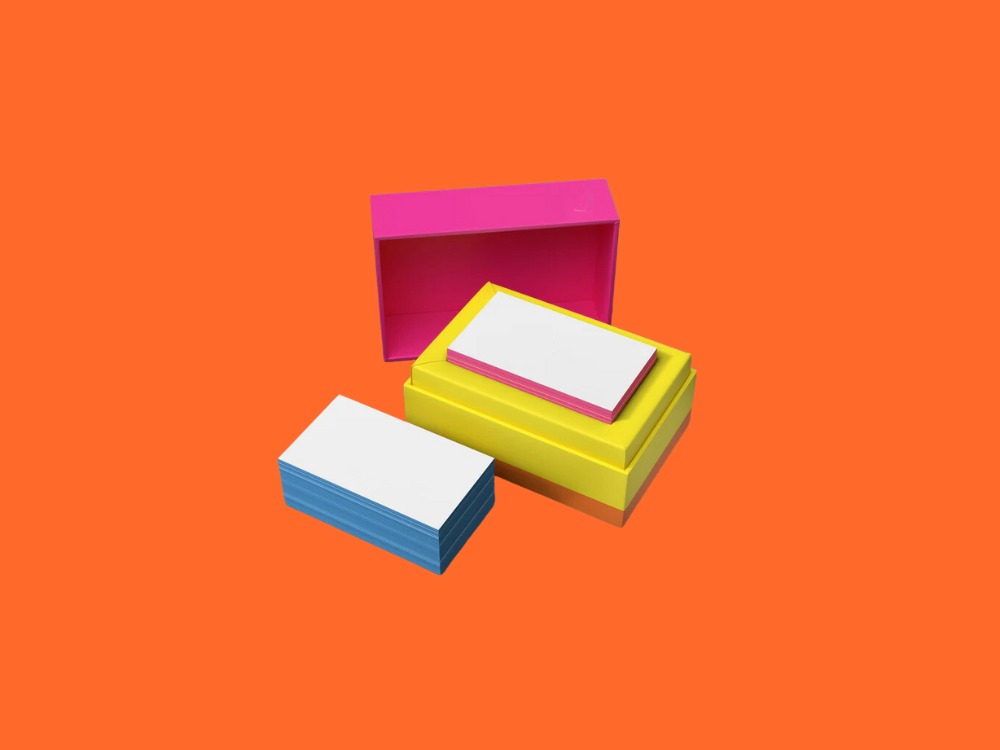A thought leader’s business card is a micro-expression of their brand. By rethinking the content, design, and delivery of your business cards, you can leave a lasting impression long after the handshake.
If you’re Gen X like me, you’ll remember the moment you got your first business cards.
For me, it was the early 2000s and I was working as an Education Consultant at WSP Edunova in London. Our EA handed me two boxes of formal, stark white cards with the red and blue company logo and my details printed in black. I filled up with pride – until I spotted the typo in my email address! I deflate, immediately.
Business cards meant I was a serious professional, but here I was handing out cards with an extra ‘l’ handwritten in black biro. What would people think?
Today, I review my proofs more carefully before I send to print! And I don’t see my cards as a sign that I’m professional.
Instead, I use them as a brand awareness tool to showcase my playful side, and hint at the nature of my work.
How I use business cards to showcase my personality and approach
My cards have my logo on one side and a different quote and colour on the other. There’s a total of 50 quotes in my deck. I design my cards in Canva, and order them from Moo. I’ve been a huge Moo fan since it first launched in London and the paper stock is unrivalled!
Business Card Content
My business cards are designed as keepsakes first, and business cards second. Each one contains a unique storytelling quote from a public figure or leading thinker. It’s something to stick on your desk instead of tossing in the bin.
Business Card Design
My cards are totally on-brand for a storytelling and brand specialist. Every detail aligns with my identity: from quotes about storytelling and vibrant brand colours, to a card shape that mirrors the designs in my visual collateral.
Business Card Dissemination
I handpick your card instead of taking a scattergun approach. After a meaningful conversation, I select a quote that resonates with your personality, challenge, or possibility. It’s my way of showing that I’m great at listening and adapting – a hint at the value I bring when personalising coaching or training experiences.

How thought leaders can build brilliant business cards
1. Get Inspired: Fuel Your Creativity
Before diving into the details, take time to gather ideas and inspiration. Think beyond conventional business cards and let your creativity loose.
- Steal like an artist. Google and find out what others are doing. Could you adapt the concept to align with your brand?
- Think outside your industry. Explore what professionals in completely different fields are doing with their cards. The best ideas usually come from adjacent or unexpected places.
- Flip the purpose. Reimagine what a business card can be. Could it be a keepsake, a tool, or a conversation piece? Is it part of a jigsaw that encourages people to network and put it back together?
- Experiment with analogue and digital. Look at creative blends of physical cards and digital add-ons like NFC chips or QR codes.
2. Content: What Goes on the Card?
The content of your card should be as unique as your thought leadership. If you’re well-known, does the card even need your name…?
- Add value. Include a QR code linking to an exclusive resource, a mini manifesto, or a link to your most popular talk or blog.
- Inspire curiosity. Feature bold statements or intriguing questions that align with your expertise and big ideas.
- Show your personality. Use storytelling elements like a tagline or big idea to convey your brand ethos.
- Be useful. Create a keepsake by adding content people will want to hang onto, such as relevant quotes or tips. Because I’m ‘The Storytelling Business’ it felt aligned to choose quotes about story from famous people that resonate.
3. Design: How the Card Looks and Feels
Your business card should look and feel as innovative as your ideas. Try to create something that would fit with no one except you.
- Experiment with materials. Go beyond paper: try wood, metal, recycled plastics, or even fabric. You can also go digital but tangible strikes a raw and real connection.
- Think in 3D. Folded designs, pop-ups, or interactive elements like sliders make your card impossible to ignore.
- Play with textures. Embossing, debossing, or raised lettering can create a tactile experience. Moo has you covered.
- Align with your brand. Think beyond your brand colours, typography, and visual elements. If your brand is bold, your card should be bold too. If you’re a subtle influencer, your card should reflect this.
- Shape It differently. Circular, triangular, or asymmetrical shapes can instantly set your card apart. In the past, I’ve bought my own corner cutters and tailored cards by hand. Painstaking – but worth it to stand out!
4. Delivery: How You Share It
A great card isn’t just about what’s on it. It’s also about how you give it out. Make the exchange a memorable moment.
- Be selective. Avoid a scattergun approach. Instead, offer your card during meaningful conversations when it will make the most impact.
- Tailor the experience. As I do, you can choose a card that aligns with the person you’re speaking to, whether it’s a quote that resonates or a design that reflects their interests.
- Pair it with a story. Share why you designed your card the way you did. The story behind it can make it even more memorable.
- Think beyond the physical. Consider creating a follow-up activity to complement your card, so you can reach out with a purposeful intent days after you first meet.
The case for using business cards
While many people have given up on business cards entirely, and others throw them in the bin when they get home from an event, I believe it’s time to give them another chance. Thought leaders trade in big, bold ideas and have the unique opportunity to use business cards as extensions of their brand and leadership.
Instead of viewing business cards as outdated relics, let’s reimagine them as tiny works of art, storytelling tools, and brand ambassadors. With a little imagination, business cards can start conversations, spark curiosity, and leave a lasting impression. When done well, they’ll become a small but mighty part of your marketing strategy.




